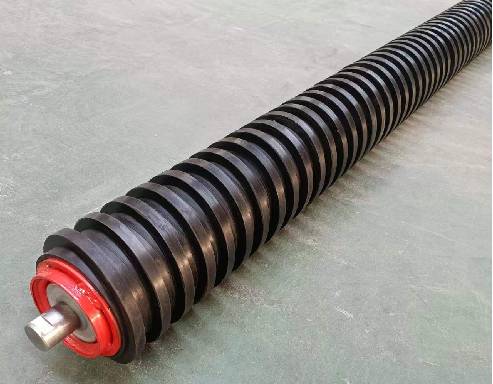 Afrikaans
Afrikaans  Albanian
Albanian  Amharic
Amharic  Arabic
Arabic  Armenian
Armenian  Azerbaijani
Azerbaijani  Basque
Basque  Belarusian
Belarusian  Bengali
Bengali  Bosnian
Bosnian  Bulgarian
Bulgarian  Catalan
Catalan  Cebuano
Cebuano  Corsican
Corsican  Croatian
Croatian  Czech
Czech  Danish
Danish  Dutch
Dutch  English
English  Esperanto
Esperanto  Estonian
Estonian  Finnish
Finnish  French
French  Frisian
Frisian  Galician
Galician  Georgian
Georgian  German
German  Greek
Greek  Gujarati
Gujarati  Haitian Creole
Haitian Creole  hausa
hausa  hawaiian
hawaiian  Hebrew
Hebrew  Hindi
Hindi  Miao
Miao  Hungarian
Hungarian  Icelandic
Icelandic  igbo
igbo  Indonesian
Indonesian  irish
irish  Italian
Italian  Japanese
Japanese  Javanese
Javanese  Kannada
Kannada  kazakh
kazakh  Khmer
Khmer  Rwandese
Rwandese  Korean
Korean  Kurdish
Kurdish  Kyrgyz
Kyrgyz  Lao
Lao  Latin
Latin  Latvian
Latvian  Lithuanian
Lithuanian  Luxembourgish
Luxembourgish  Macedonian
Macedonian  Malgashi
Malgashi  Malay
Malay  Malayalam
Malayalam  Maltese
Maltese  Maori
Maori  Marathi
Marathi  Mongolian
Mongolian  Myanmar
Myanmar  Nepali
Nepali  Norwegian
Norwegian  Norwegian
Norwegian  Occitan
Occitan  Pashto
Pashto  Persian
Persian  Polish
Polish  Portuguese
Portuguese  Punjabi
Punjabi  Romanian
Romanian  Russian
Russian  Samoan
Samoan  Scottish Gaelic
Scottish Gaelic  Serbian
Serbian  Sesotho
Sesotho  Shona
Shona  Sindhi
Sindhi  Sinhala
Sinhala  Slovak
Slovak  Slovenian
Slovenian  Somali
Somali  Spanish
Spanish  Sundanese
Sundanese  Swahili
Swahili  Swedish
Swedish  Tagalog
Tagalog  Tajik
Tajik  Tamil
Tamil  Tatar
Tatar  Telugu
Telugu  Thai
Thai  Turkish
Turkish  Turkmen
Turkmen  Ukrainian
Ukrainian  Urdu
Urdu  Uighur
Uighur  Uzbek
Uzbek  Vietnamese
Vietnamese  Welsh
Welsh  Bantu
Bantu  Yiddish
Yiddish  Yoruba
Yoruba  Zulu
Zulu rubber impact roller
Understanding Rubber Impact Rollers Enhancing Efficiency and Performance
Rubber impact rollers are crucial components in various industrial applications, particularly in material handling and conveyor systems. These rollers are designed to absorb shock and reduce the impact force that occurs during the transportation of materials, thereby ensuring smoother operations and prolonging the lifespan of equipment.
One of the primary advantages of rubber impact rollers is their ability to mitigate noise and vibrations. In many industrial settings, the operation of heavy machinery can generate considerable noise, which can be detrimental to both workers and the surrounding environment. Rubber impact rollers, with their elastic properties, dampen vibrations and reduce overall noise levels, creating a more conducive working atmosphere.
Furthermore, rubber impact rollers provide an excellent grip on the materials being transported. This is particularly important in applications involving bulk materials such as gravel, sand, or even fragile items. The rubber surface offers enhanced friction, preventing slippage and ensuring that materials remain securely in place as they move along the conveyor system. This not only improves the efficiency of material handling but also minimizes the risk of spills and accidents.
rubber impact roller

The durability of rubber impact rollers is another key advantage
. Unlike traditional metal rollers, which can suffer from wear and tear over time, rubber rollers are designed to withstand tremendous forces and adverse conditions without compromising their integrity. They resist abrasion, reducing the frequency of replacements and maintenance. This is particularly beneficial for industries such as mining, construction, and logistics, where heavy loads and harsh conditions can lead to rapid deterioration of equipment.In addition to their physical properties, rubber impact rollers are also versatile in their design and application. They can be produced in various sizes, diameters, and hardness levels to meet specific operational requirements. Customization options allow industries to tailor their rubber rollers for optimal performance, ensuring that they can handle the unique challenges of different materials and conveyor layouts.
The environmental impact of rubber impact rollers should also not be overlooked. Many manufacturers are now producing eco-friendly rubber options derived from recycled materials. This initiative not only contributes to sustainability efforts but also provides a cost-effective alternative to traditional manufacturing processes.
In conclusion, rubber impact rollers are an indispensable asset in modern industrial operations. Their ability to absorb shock, reduce noise, enhance grip, and offer durability makes them a preferred choice in conveyor systems across various sectors. As industries continue to prioritize efficiency and sustainability, the role of rubber impact rollers will undoubtedly expand, solidifying their status as vital components in material handling solutions.
-
Revolutionizing Conveyor Reliability with Advanced Rubber Lagging PulleysNewsJul.22,2025
-
Powering Precision and Durability with Expert Manufacturers of Conveyor ComponentsNewsJul.22,2025
-
Optimizing Conveyor Systems with Advanced Conveyor AccessoriesNewsJul.22,2025
-
Maximize Conveyor Efficiency with Quality Conveyor Idler PulleysNewsJul.22,2025
-
Future-Proof Your Conveyor System with High-Performance Polyurethane RollerNewsJul.22,2025
-
Driving Efficiency Forward with Quality Idlers and RollersNewsJul.22,2025





























